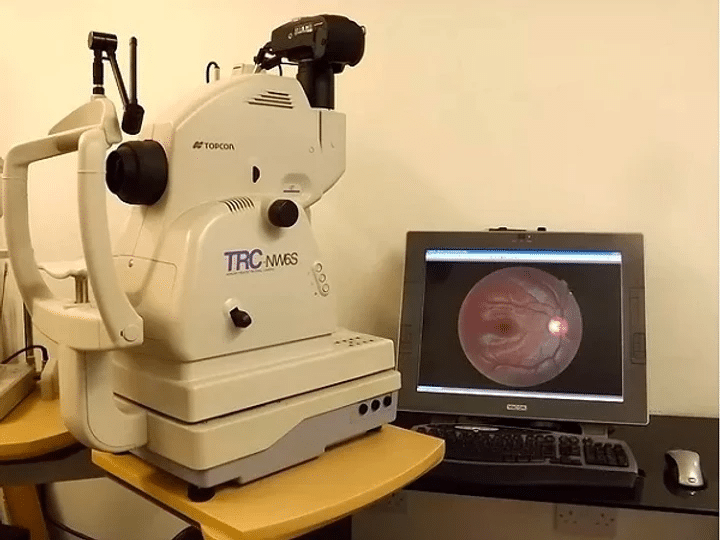By using the OCT, optometrists have the potential of picking up abnormalities at an earlier stage, usually leading to better treatment outcomes.

OCT is especially useful for anybody who is worried or has a family history of:
- Macula degeneration
- Glaucoma
- Diabetic retinopathy
- Macula hole
- Optic nerve disease
- Retinal tears
- Vitreous detachments
- Floaters
- Any person with sight in only one eye
- Anyone who wants ultimate peace of mind regarding the health of their eyes
What is OCT?
Optical coherence tomography (OCT) is the latest in imaging technology to help ascertain the health of your eyes and has, until recently, only been available to hospital eye clinics. OCT is an extremely advanced imaging technique for the eyes, giving a three-dimensional, cross-sectional scan of the retina.
It is a very simple, non-invasive and quick test to perform. The patient sits in front of a special type of camera and scans are taken of the structures inside the eye.
Is the OCT the same as taking a ‘photo’ of the inside of the eye?
No. The 3D-OCT scans the surface and also BELOW the surface of the retina. This allows us to visualise, in high resolution, the different layers of the retina which is not possible with the normal ‘fundus photo’.
The unique way the image is formed means for the first time we can actually see below the surface of the retina and view the microscopic layers beneath.
The amazing detail allows us to detect abnormalities earlier that are not apparent during a standard eye examination.
The OCT can create a contour map of the optic nerve, measure the retinal nerve fibre layer thickness, corneal thickness, and anterior chamber angle. All of these structures are extremely helpful in the early diagnosis and progression of glaucoma and other eye disorders. The OCT can also identify macula disease, including macular degeneration, both wet or dry, and also monitor its progress.
3 ways to help protect and maintain healthy eyes:
- Have regular check-ups including the 3D-OCT scan to monitor any changes.
- Protect your eyes against damage from UV light. When buying sunglasses make sure they have adequate UV protection.
- Eat a diet rich in vitamins and minerals, particularly lutein and zeaxanthin, if there is a family history of macula disease. These are found in green leafy vegetables and in yellow fruits.





